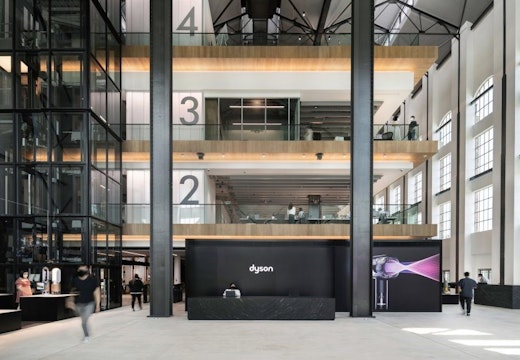Want to shift your culture? Workplace design can be a lever
A new Australian study confirms the findings of previous academic research – organisational culture is not fixed and can be adapted using the symbols and artefacts of workplace design
Workplace design has a considerable impact on organisational culture and can be used to leverage and change it, according to a new study by an Australian research team led by Kusal Nanayakkara of RMIT University, Melbourne.
The researchers studied the introduction of activity-based working (ABW) at large organisations in Australia from 2012-2019 using surveys and interviews. A noticeable discrepancy between the perceptions of the organisation and employees in the public and private sectors was identified, where public sector employees felt that standardised procedures still governed their actions even in ABW.
The paper was published in the June 2024 edition of the Journal of Facilities Management. Its findings of back up previous studies in the field, including work by Nanayakkara and associates (2021), which shared that ‘workplace designs directly influence culture by supporting the systems, symbols, engagement/motivation and behaviours of the organisation and employees . . . the critical achievement of workspace design is to integrate the cultures, values and behaviours of organisations to meet their ultimate goals.’
Defining organisational culture
Fleming and Guldenmund (2015) concisely define organisational culture as influencing ‘a people’s or group’s views of the world—that is, what is important and how new information should be interpreted—and is stable over time’. New members of the organisation informally ‘learn’ the culture through observation, social feedback, and trial and error, according to Schein (1985).
Research indicates that aligning the culture of a group with the form of the place where that group works can boost wellbeing and professional performance, with desirable repercussions for mental and physical health and comfort (for example, Schein, 1990; Peponis, Bafna, Bajaj, Bromberg, Congdon, Rashid, Warmels, Zhang, and Zimring, 2007).
People can effectively ‘read’ organisational cultures in physical environments, although this can sometimes be difficult to do so correctly. Schein (1990) reports that there are three fundamental levels at which culture manifests itself: (a) observable artifacts, (b) values, and (c) basic underlying assumptions. ‘The problem with artifacts,’ says Schein, ‘is that they are palpable but hard to decipher accurately . . . one of the flaws of studying organisational symbols, stories, myths, and other such artifacts is that we may make incorrect inferences from them if we do not know how they connect to underlying assumptions.’
Competing values framework
The messages we pull from workplace design carry a lot of weight; we feel they more accurately represent organisational cultures than related written statements, according to Becker and Steele, 1995).
Within any company, cultures can be discussed at multiple scales. One of the best known academic models to categorise cultures is Cameron and Quinn’s competing values framework (2006), which was used to identify organisational cultures in the new Australian research by Nanayakkara and colleagues (in press).
According to Cameron and Quinn, organisations can be:
- Hierarchical cultures where ‘official’ procedures and rules (for example, related to which sorts of employees work in which sorts of locations) are important and efficiency is revered.
- Market cultures in which effectively competing (for market share, in races to publish academic articles first, in getting the lowest price for a raw material, etc.) and winning (at whatever ‘game’ is being played) are paramount. Profitability is a major consideration.
- Clan cultures, which are more collegial and team-oriented. Humane work environments and consensus are valued by clans.
- Adhocracies, who are always ready to reshape themselves as needed and perennially focused on creativity and innovation as routes to success.
Cameron and Quinn use an adjective to describe each organisational culture and those adjectives provide useful insights into the cultures themselves: Hierarchy – Controlling; Market – Competitive; Clan – Collaborative; Adhocracy – Creative. Each culture has logical design implications.
For example, clans will appreciate design support for mingling with others and for individual wellbeing (such as sit-stand desks), as well as involving users in the design process. In hierarchies, rules will establish who is entitled to what, and what should happen in different work zones, so design protocols must be thoughtfully developed at the outset. In adhocracies, spaces should be easily modified as creative flexibility is valued. Within market cultures, companies will provide whatever it takes design-wise to help employees to ‘win’.
Read more of the latest research insights from Sally Augustin in Research Roundup, her regular column in the Innovation Zone for WORKTECH Academy members and partners here.
Research sources
Franklin Becker and Fritz Steele. 1995. Workplace by Design: Mapping the High-Performance Workscape. Jossey-Bass: San Francisco, CA.
Kim Cameron and Robert Quinn. 2006. Diagnosing and Changing Organizational Culture. Jossey-Bass: San Francisco, CA.
Cheng and Boris Groysberg. 2020. ‘How Corporate Cultures Differ Around the World.’ Harvard Business Review
Mark Fleming and Frank Guldenmund. 2015. ‘Organizational Culture.’ In D. Boehm-Davis, F. Durso, and J. Lee (eds.) APA Handbook of Human Systems Integration. American Psychological Association; Washington, DC, pp. 589-604.
Kusal Nanayakkara, Sara Wilkinson, and Dulani Halvitigala. 2021. ‘Influence of Dynamic Changes of Workplace on Organisational Culture.’ Journal of Management and Organization, vol. 27, no. 6, pp. 1003-1020
Kusal Nanayakkara, Sara Wilkinson, and Dulani Halvitigala. ‘Organisations’ and Employees’ Perceptions of the Impact of Activity-Based Working on the Organisational Culture.’ Journal of Facilities Management (in press).
John Peponis, Sonit Bafna, Ritu Bajaj, Joyce Bromberg, Christine Congdon, Mahbub Rashid, Susan Warmels, Yan Zhang, and Craig Zimring. 2007. ‘Designing Space to Support Knowledge Work.’ Environment and Behavior, vol. 39, no. 6, pp. 815-840.
Edgar Schein. 1990. ‘Organizational Culture.’ American Psychologist, vol. 45, no. 2, pp. 109-119.








